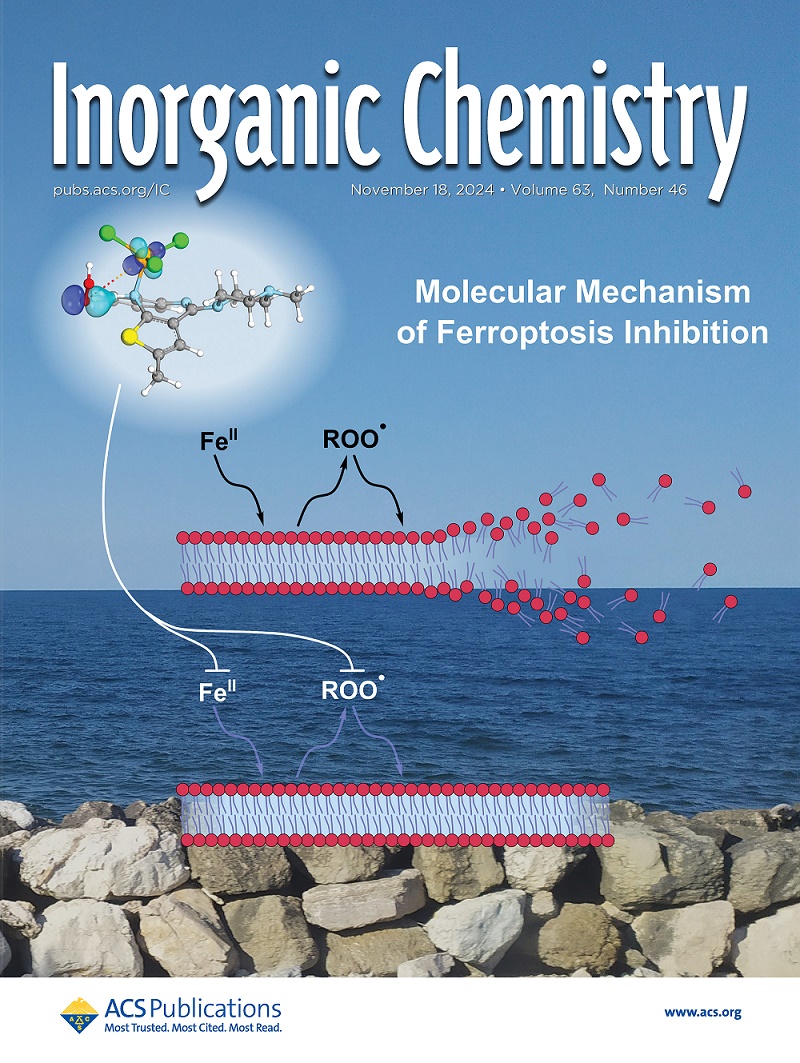Role of Solvent Decomposition in the Synthesis and Composition of Porous Zirconium-Based Coordination Cages
IF 4.7
2区 化学
Q1 CHEMISTRY, INORGANIC & NUCLEAR
引用次数: 0
Abstract
Porous zirconium-based coordination cages are promising materials for applications in gas adsorption, catalysis, and molecular separation due to their tunability and stability. However, their synthesis is often complicated by the formation of competing phases, including insoluble or poorly soluble byproducts that impact purity and composition. Moreover, product composition and solubility can vary widely due to factors such as humidity, seasonal fluctuations, and lab-to-lab variations, highlighting the inherent lack of robustness in these syntheses. In this work, we investigate how solvothermal synthesis conditions, particularly temperature and solvent decomposition, influence the formation and composition of these cages. We show that elevated temperatures accelerate solvent breakdown, leading to the incorporation of formate and acetate byproducts that alter the final cage structures and contribute to the formation of insoluble zirconium-based, amorphous solids. By systematically varying the reaction conditions, we optimized the composition of the isolated cage products, achieving improved phase purity. By optimizing synthetic parameters, we achieve control over cage formation and particle morphology while mitigating the effects of solvent decomposition. Our findings provide insights into the balance between ligand coordination and solvent effects, enabling the development of strategies to enhance the purity, porosity, and functionality of these molecular cages.

溶剂分解在多孔锆基配位笼合成和组成中的作用
多孔锆基配位笼由于其可调性和稳定性,在气体吸附、催化和分子分离等领域具有广阔的应用前景。然而,由于竞争相的形成,包括影响纯度和组成的不溶性或难溶性副产物,它们的合成往往变得复杂。此外,由于湿度、季节波动和实验室间的变化等因素,产品组成和溶解度可能会有很大差异,这突出了这些合成中固有的鲁棒性缺乏。在这项工作中,我们研究了溶剂热合成条件,特别是温度和溶剂分解,如何影响这些笼的形成和组成。研究表明,高温加速溶剂分解,导致甲酸酯和乙酸酯副产物的掺入,改变了最终的笼状结构,并有助于形成不溶性的锆基无定形固体。通过系统地改变反应条件,我们优化了分离笼产物的组成,提高了相纯度。通过优化合成参数,我们实现了对笼状结构和颗粒形态的控制,同时减轻了溶剂分解的影响。我们的发现为配体配位和溶剂效应之间的平衡提供了见解,从而能够开发出提高这些分子笼的纯度、孔隙度和功能的策略。
本文章由计算机程序翻译,如有差异,请以英文原文为准。
求助全文
约1分钟内获得全文
求助全文
来源期刊

Inorganic Chemistry
化学-无机化学与核化学
CiteScore
7.60
自引率
13.00%
发文量
1960
审稿时长
1.9 months
期刊介绍:
Inorganic Chemistry publishes fundamental studies in all phases of inorganic chemistry. Coverage includes experimental and theoretical reports on quantitative studies of structure and thermodynamics, kinetics, mechanisms of inorganic reactions, bioinorganic chemistry, and relevant aspects of organometallic chemistry, solid-state phenomena, and chemical bonding theory. Emphasis is placed on the synthesis, structure, thermodynamics, reactivity, spectroscopy, and bonding properties of significant new and known compounds.
 求助内容:
求助内容: 应助结果提醒方式:
应助结果提醒方式:


